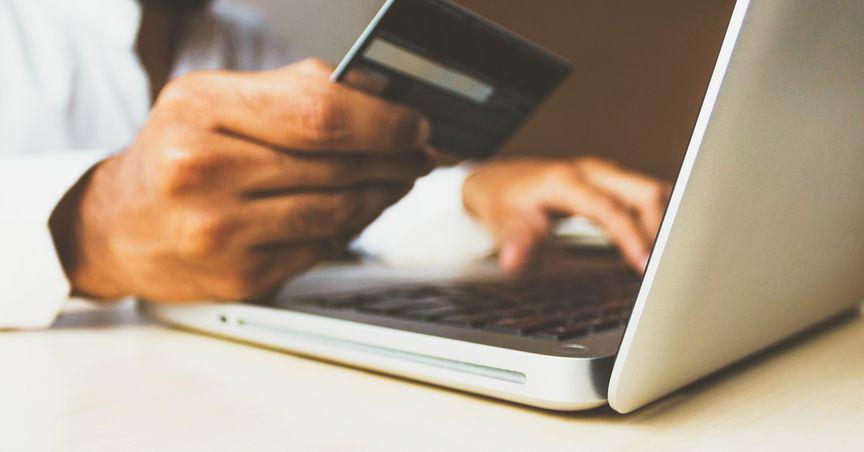The modern generation needs technology in every core of their being. Once upon a time, the technology existed but only under certain constraints. As a wave of digitization spreads like a virus, the modern method of making payments has a magical quality. Large companies were the only ones previously capable of investing in digital transformations and providing a tech-savvy experience for their consumers. Today, on the other hand, digitising doesn't need a hefty financial outlay. Because it's readily accessible, it's helping small companies thrive by allowing them to accept more forms of payment.
Safe and reliable payment methods
With the facilities of auto trading bots like Bitcoin Bank Breaker, it has been very convenient to make safe and reliable transactions. You must familiarise yourself with the safest payment methods to avoid money losses. The following online payment options were developed with the security of your 2023 online purchases.
1. EFT transfers
Through the ACH network, you may instantly move money from one bank account to another. Numerous safeguards, including encryption and access limitations, are used by this payment system to ensure the safety of its users' financial data.
The most popular way to make a purchase is by using a digital wallet. The spread of the epidemic helped digital payment systems take off. The ability to save funds in a digital wallet ahead of time on a smartphone has opened the door for instant, cashless transactions between buyers and sellers. The 2.7 billion people who use digital wallets now have a new payment trend to follow thanks to this. It is predicted that by the year 2023, tap-to-pay would have replaced credit and debit cards as the primary means of payment at point-of-sale terminals. Eliminating cash transactions is the future, and digital wallets will make it a reality.
2. EMV chip-enabled credit cards
Most credit cards now use EMV chip technology rather than a magnetic strip, making it possible to conduct in-person payments without having to swipe the card. The payment terminal uses EMV technology to decipher the encrypted data sent by the card's chip. This technique aids in reducing instances of counterfeit fraud by making use of unique encryption keys for each transaction.
Over the last decade, EMV technology has grown quickly in the United States and throughout the globe. Standards organisation EMVCo estimates that by the second quarter of 2022, more than nine in ten card-present transactions throughout the globe were conducted using EMV-chip-enabled payment cards.
3. Contactless credit cards
The same technology that is used in EMV chip and pin credit cards is used in contactless payments. If your credit card supports contactless payments, all you have to do to make a purchase is wave it over the machine to transmit a unique encryption code.
Contactless payments were on the increase even before COVID-19 was released into the wild in 2020. Despite the beginning of the epidemic, this trend has only risen and is continuing to grow in popularity.
4. Peer-to-peer transactions
P2P transactions are more generally referred to by the names of the apps that facilitate them. Popular applications that facilitate the transfer of funds from one user to another include Venmo, Cash App, PayPal, Google Pay, Apple Pay, and Zelle.
While most people use it to send money to friends and family, it might be a convenient option for certain companies if they accept the payment.
Although pay-to-merchant (P2M) solutions are not a good fit for most companies, market leader PayPal is widely accepted by merchants that provide them. There are, however, significant limitations for companies that want to provide P2M.
There is a chance that certain transactions may take longer to execute, cost more, and be less secure than others. The simplified payment process for the consumer may be the determining factor for certain companies, but it may not be appropriate for others.
5. The "Buy Now, Pay Later" payment model
Customers may use buy-now-pay-later (BNPL), a payment option that operates similarly to a personal loan, to stretch out the cost of a purchase. These loans come with a wide range of conditions, from interest-bearing to interest-free instalment plans.
These purchases are distinct from regular credit card purchases and have the potential to persuade clients. McKinsey found that 30% of respondents utilised BNPL and that 29% of those who did say they would have made lesser purchases or none at all if BNPL hadn't been an option.
6. Digital currency & international transfers
Although the price of cryptocurrencies is notoriously unpredictable, 43% of respondents to a recent study said they held it because of the financial possibilities. Some of the largest firms in the world already accept crypto payments, including Microsoft, Tesla, Expedia, and WeWork. As the use of digital payment methods becomes more commonplace, it is important to monitor the development of this trend.
Cryptocurrency is also becoming more popular for international transactions. These kinds of deals often go through more quickly and are converted to local currency without the consumer having to do anything. PayPal's ability to facilitate the purchase, storage, transfer, and usage of numerous cryptocurrencies in international transactions is a major selling point for the service.
7. Mobile applications that process payments
Apps like PayPal, Google Pay, Apple Pay, and Facebook Pay consolidate all of your payment information into a single, secure location. Multi-factor authentication, push alerts, and biometrics like face and fingerprint scanning are just some of the security benefits of using a payment app. For example, Apple Pay requires a password, but you can alternatively use Face ID or Touch ID instead. Apple Pay does not save or have access to your payment information, and it does not keep any traceable transaction information.
8. Prepaid cards
Prepaid cards do not have an associated bank account but may be loaded with funds. To put it another way, if you use a prepaid card, you can't spend more than what's on the card. In comparison to debit and credit cards, this is what makes prepaid cards so secure.
Using a prepaid card to pay for products and services online is a wonderful approach to safeguard your finances since if a threat actor were to acquire your card details, they would only be able to access the funds already loaded onto the prepaid card and not your bank account. A far more serious problem would arise if your financial data, such as credit card or debit card numbers, were stolen.
One of the greatest ways to protect your personal information is to use a prepaid card only for online purchases and other digital activities. Instead of using your regular credit card and putting yourself at risk online, you may simply load money onto a prepaid card anytime you need to make an online purchase.
9. Biometric payment systems
Given the prevalence of cyber security concerns and fraud over the last several years, the ability to make completely secure financial transactions is a highly sought-after feature. There's a sizable subset of consumers that would rather prioritise safety in their payment systems than have them seem flashy. Payment authorisation based on a person's distinct biological patterns is gaining popularity, thanks to the advent of biometric payments. Fingerprint scans, face recognition, iris scans, and vein mapping are the only acceptable methods of verification for approving a payment. Identity theft and fraud are major problems, but modern technology has advanced to the point where they may be prevented. This protection is made possible by biometric pay systems. Biometric pay, with the added security it provides, is sure to grow in popularity and demand over the coming years.
10. A voice-based payment system powered by AI
Having an artificial intelligence (AI) assistant, such as a smart speaker or a voice assistant, in one's own house has become a question of convenience and simplicity of access. Today, all it takes to shop from the vast selection offered by online retailers is a quick conversation with your AI assistant, followed by a command to complete the transaction (including payment). All it takes is a few words said to one of these AI helpers, and they'll know just what to do. You may now finalise your purchases by chatting with your home attendants and making payments without leaving your bean bag. Statista found that 35% of users had made voice purchases for in-home services, gadgets, food, and clothes. Before the cold weather returns, it would be wise to invest in an AI helper of your own.
Conclusive remarks
The evolution of online digital payment methods has been phenomenal. More choices exist today than ever before, and some of them are even secure. We can only speculate about what the future holds, but it is safe to assume that as new forms of online payment become available, so too will new forms of cybercrime. And remember, no matter how careful you are, it only takes one mistake for someone to get access to your bank account, so always be on the lookout for red flags.
Risk Disclosure: Trading in cryptocurrencies involves high risks including the risk of losing some, or all, of your investment amount, and may not be suitable for all investors. Prices of cryptocurrencies are extremely volatile and may be affected by external factors such as financial, regulatory, or political events. The laws that apply to crypto products (and how a particular crypto product is regulated) may change. Before deciding to trade in financial instrument or cryptocurrencies you should be fully informed of the risks and costs associated with trading in the financial markets, carefully consider your investment objectives, level of experience, and risk appetite, and seek professional advice where needed. Kalkine Media cannot and does not represent or guarantee that any of the information/data available here is accurate, reliable, current, complete or appropriate for your needs. Kalkine Media will not accept liability for any loss or damage as a result of your trading or your reliance on the information shared on this website.



